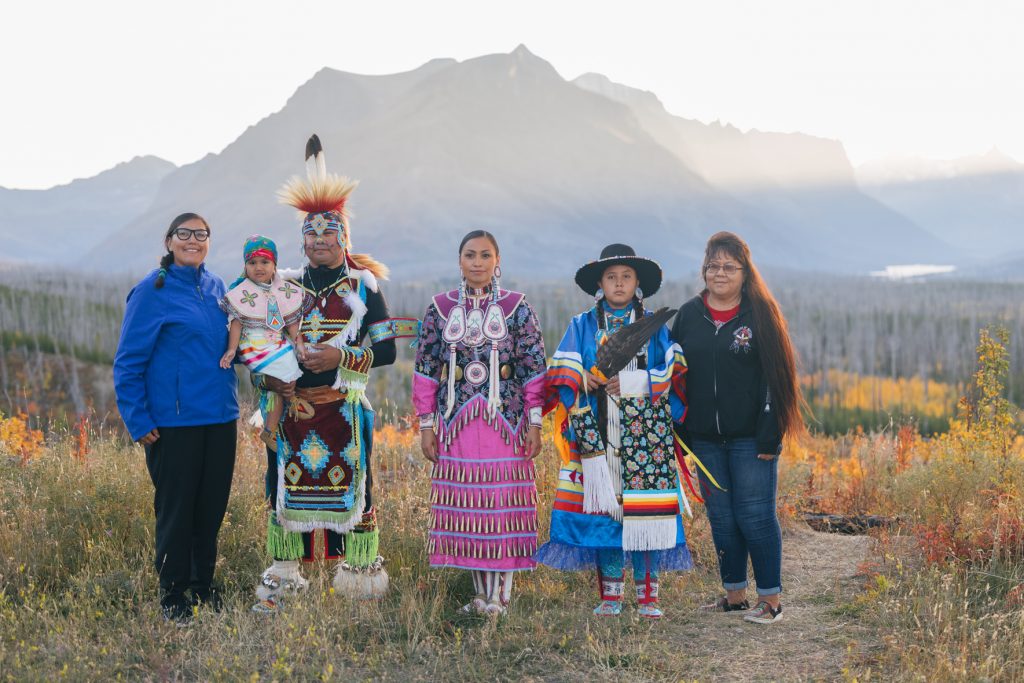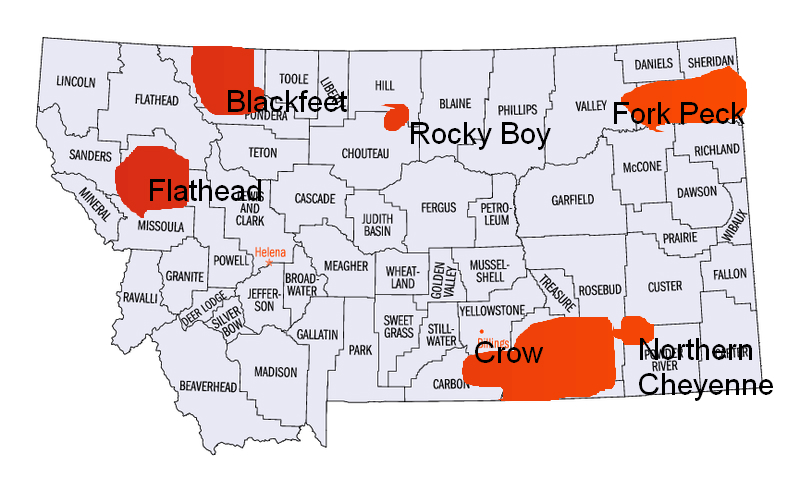Montana’s Reservations: A Tapestry of Tradition and Transformation
Montana’s Reservations: A Tapestry of Tradition and Transformation
Montana. Big sky country. Land of rugged mountains, vast plains, and a rich history woven with the stories of Native American tribes. Today, nine federally recognized tribes call Montana home, each with its own unique culture, traditions, and challenges. While the past holds stories of hardship and struggle, Montana’s reservations are now vibrant communities, brimming with life, culture, and a fierce determination to thrive in the 21st century.
A Legacy of Resilience
Related Articles: Montana’s Reservations: A Tapestry of Tradition and Transformation
- Unveil the Hidden Gems of Indian Reservations in Colorado
- Unveil the Enigmatic World of New York State's Native American Tribes
- Unlock the Treasures of Chinle's Indian Reservations: Discover a Cultural Oasis
- Uncover the Secrets of the Indian Reservation in Mt. Pleasant, MI
- Unveiling New Mexico's Native American Reservations: Discover Hidden Gems and Indigenous Cultures
Montana’s reservations are a testament to the resilience of Native American people. For centuries, these lands were home to tribes like the Blackfeet, Crow, and Flathead, who lived in harmony with nature and developed intricate systems of governance and social structures. But the arrival of European settlers brought devastating changes. Treaties were broken, lands were stolen, and traditional ways of life were disrupted.
The forced relocation of Native Americans onto reservations, often in harsh and barren lands, marked a period of immense hardship. The government’s policies of assimilation aimed to erase their culture and language, leaving a legacy of trauma and poverty.
However, despite these challenges, Native American communities in Montana never lost their spirit. They clung to their traditions, languages, and spiritual beliefs, passing them down through generations. Their resilience and determination to preserve their heritage are what define them today.
A New Dawn: Economic Growth and Self-Determination
Today, Montana’s reservations are experiencing a renaissance. Tribal governments are actively working to improve the lives of their people, focusing on economic development, education, healthcare, and environmental protection.
Economic Diversification:
Gone are the days when reservation economies were solely reliant on federal funding. Tribes are actively pursuing economic diversification, taking ownership of their destinies. They’re investing in tourism, renewable energy, gaming, and entrepreneurship, creating jobs and generating revenue for their communities.
Cultural Preservation:

The preservation of Native American culture is a cornerstone of tribal life. From powwows and storytelling to language immersion programs and traditional arts, these communities are working tirelessly to keep their heritage alive.
Education and Healthcare:
Education and healthcare are crucial for the well-being of any community, and Montana’s reservations are no exception. Tribes are investing in quality education for their children, ensuring they have the skills and knowledge to thrive in the 21st century. They’re also working to improve access to healthcare, addressing disparities and improving the health outcomes of their people.
Environmental Stewardship:
The relationship between Native Americans and the land is deeply spiritual and interconnected. Tribes are leading the way in environmental stewardship, working to protect their sacred lands and waters from pollution and exploitation. They’re advocating for sustainable practices and working to ensure a healthy environment for future generations.

Challenges Remain
While progress has been made, Montana’s reservations still face significant challenges. Poverty, unemployment, and lack of access to basic services like housing and transportation remain persistent issues. The legacy of historical trauma and systemic racism continues to impact the well-being of Native Americans.
A Call for Understanding and Collaboration
Understanding the history and challenges faced by Montana’s reservations is crucial for building stronger relationships between Native American communities and the broader society. It’s important to recognize the inherent sovereignty of tribes and to engage in respectful dialogue and collaboration.
The Future is Bright

Despite the challenges, the future of Montana’s reservations is bright. The resilience and determination of Native American communities, coupled with their commitment to cultural preservation, economic development, and self-determination, paint a hopeful picture for the future.
FAQ about Indian Reservations in Montana Today
Q: What are the names of the nine federally recognized tribes in Montana?
A: The nine federally recognized tribes in Montana are:
- Blackfeet Tribe
- Crow Tribe
- Flathead Nation
- Fort Belknap Indian Community
- Fort Peck Tribes
- Little Shell Tribe of Chippewa Indians of Montana
- Northern Cheyenne Tribe
- Rocky Boy’s Indian Reservation
- Salish and Kootenai Tribes
Q: What are the main economic activities on Montana’s reservations?
A: Economic activities on Montana’s reservations are diverse and include:
- Gaming
- Tourism
- Agriculture
- Forestry
- Energy development
- Entrepreneurship
Q: What are the major challenges faced by Montana’s reservations?
A: Montana’s reservations face a number of challenges, including:
- Poverty
- Unemployment
- Lack of access to basic services
- Health disparities
- Environmental degradation
Q: What can non-Native Americans do to support Montana’s reservations?
A: Non-Native Americans can support Montana’s reservations by:
- Educating themselves about Native American history and culture
- Supporting tribal businesses and organizations
- Advocating for policies that support Native American communities
- Engaging in respectful dialogue with Native American people
Montana’s reservations are a testament to the enduring spirit of Native American people. Their history is a story of resilience, adaptation, and a fierce commitment to cultural preservation. As we move forward, let’s strive to build bridges of understanding and collaboration, working together to create a brighter future for all Montanans.

Closure
Thus, we hope this article has provided valuable insights into Montana’s Reservations: A Tapestry of Tradition and Transformation. We hope you find this article informative and beneficial. See you in our next article!